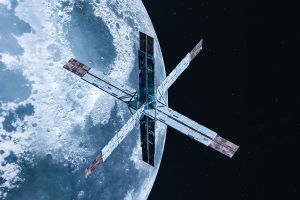Ceres, the largest object in the main asteroid belt between Mars and Jupiter, stands out as a unique and scientifically intriguing dwarf planet.
Discovered in 1801 by Italian astronomer Giuseppe Piazzi, Ceres was initially considered a planet before being reclassified as an asteroid, and more recently, in 2006, as a dwarf planet.
With a diameter of approximately 940 kilometers—about a quarter the size of Earth's Moon—and accounting for roughly one-third of the asteroid belt's total mass, Ceres holds a vital position in our understanding of the solar system's formation and the nature of water-rich bodies in the inner solar system.
Geological and Physical Characteristics
Unlike most asteroids, which are irregular in shape and primarily rocky, Ceres possesses a nearly spherical shape indicative of hydrostatic equilibrium—a hallmark of dwarf planets. Its surface is a mix of rock, ice, and hydrated minerals such as clays and carbonates, which suggest a history of aqueous alteration.
NASA’s Dawn spacecraft, which orbited Ceres between 2015 and 2018, revealed intriguing geological features including craters, domes, slopes formed by landslides, and most prominently, cryovolcanoes—volcanoes that erupt volatile substances like water, rather than molten rock.
Ahuna Mons, a 4-kilometer-high dome, exemplifies such cryovolcanism. Its smooth, craterless surface indicates relatively recent geological activity, possibly within the last few tens of millions of years. Ceres's density, about 2.16 grams per cubic centimeter, suggests that around 25–30% of its mass is water ice, which exists both near its surface and within subsurface layers.
Water Vapor and Surface Activity
One of the most remarkable discoveries concerning Ceres is its transient yet observable plumes of water vapor. Detected by the Herschel Space Observatory, these plumes vaporize primarily when the surface ice warms in sunlight. This phenomenon makes Ceres the first body in the asteroid belt with confirmed water vapor emissions, positioning it among the few objects in the solar system with active volatile release outside the classical icy moons and comets.
The presence of localized water vapor suggests ongoing sublimation and perhaps brine movement beneath the surface, reinforcing the idea that Ceres may harbor reservoirs of liquid or near-liquid water under certain conditions.
This dynamic water cycle on Ceres opens compelling astrobiological questions. While direct evidence of life is absent, the chemical environment—complete with organic compounds discovered by Dawn—hints at the building blocks necessary for life processes.
The dwarf planet thus embodies an intermediate class between rocky worlds and icy bodies, making it a critical subject for understanding the evolution of habitable environments beyond Earth.
Origin and Evolution
The origin of Ceres has been a subject of investigation and debate. Some hypotheses proposed that Ceres might have formed farther from the Sun where ammonium compounds are stable, migrating inward to its current orbit. Recent findings of ammonium-rich deposits on its surface, gathered by the Dawn spacecraft, suggest an origin consistent with the asteroid belt, indicating that Ceres likely formed in situ rather than arriving from the outer solar system.
Its unique composition and size distinguish it from the smaller, collision-derived fragments populating the belt. Ceres’ survival as a differentiated body contrasts with the largely rubble-pile structure of many other asteroids. This has implications for the solar system’s early collisional environment and the retention of volatiles in warmer regions closer to the Sun.
Dr. Thomas Prettyman, a planetary scientist specializing in the Dawn mission, stated, “Ceres challenges the classical boundaries between rocky and icy bodies, offering a laboratory for understanding water-rock interactions and the distribution of volatiles in the early solar system.” Prettyman’s commentary highlights how Ceres serves as a bridge in planetary science, reshaping conceptions about what constitutes a planet or small body.
Dr. Fran Bagenal, an expert on planetary atmospheres, emphasized the importance of Ceres’ transient atmosphere: “Observing water vapor emissions on Ceres was unexpected and transformative.
It reveals that even small worlds can have complex geophysical processes that maintain atmospheres temporarily, without the need for large-scale planetary magnetism.” Bagenal’s insight underscores Ceres as a dynamic and active world, rather than a dead relic.
Ceres occupies a remarkable niche in the solar system as the sole dwarf planet within the asteroid belt and the closest water-rich world to the Sun. Its geology, characterized by cryovolcanism and water-related alterations, combines with the detection of transient water vapor plumes to present an active water cycle unseen in other asteroids.
These discoveries expand our knowledge of the diversity and complexity of small bodies, suggesting that habitable environments may have existed or may still exist well beyond the classical habitable zone.


